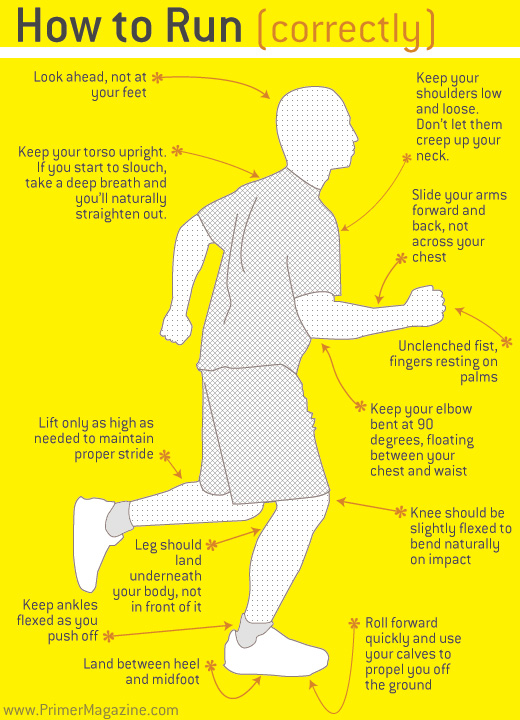*Disclaimer: I'm not a doctor or even a doctor in training, even if I do read WebMD and diagnose myself all the time. Please consult your doctor for any concerns you have related to strapping on your shoes for the first time.
I was never supposed to be a runner. I played tennis. But my back tells me, quite often now, that tennis is no longer in the cards. Therefore I needed a new avenue for activity. I remember while in college a friend of mine ran a marathon. A freakin’ marathon! I thought to myself, “not going to be me.” But here I am, running and training to do my first half-marathon on March 20th in New York City.
It all began two years ago on my 25th birthday when I received the Nike+ running chip. I had begun running a few months prior to that, but I was using an arcane way of tracking my runs, which involved using Google Maps and my figures to measure my distance.
I have learned a lot since those early days and as I am about to embark on 13.1 miles, I thought it would be beneficial to share a bit of what I have learned since you can’t play football and hockey forever!
Five Things to Know
Look Ahead (and keep those arms moving)!
I always wondered how I was supposed to run. I’m not a sprinter and my legs aren’t skin and bones. Like I said at the top, I used to play tennis, so my legs are bigger size-wise than most runners. So I have to change how I run a bit.
The biggest thing I notice when I see runners on the roads is how stiff they are. You must be relaxed. It starts at your head and looking forward, but around, and goes all the way to your toes. Keep the muscles moving. My biggest pet peeve is seeing people run and bring their hands and forearms across their chests, a big no-no! Just run forward with your arms swinging through the hips, but not crossing your body.
Pulling your arms across your body is wasted energy that is not propelling you forward. As for the rest of your body; your legs and feet are also very important. Runner’s World says to have your feet land directly underneath you and if you’re a jogger/runner and not a sprinter, you don’t need a high-knee lift, in fact it’s again wasted energy on a long run.
More: Additional “101” thoughts from Runner’s World
Start Slow!
You’re not out to run a marathon … yet. So take it slow. Run at a slower than normal pace and at a mile distance. If that feels good, add a bit more distance the next time. The one thing I have done really well is pace my runs. Now that I have been running for two years, I can run four miles one day and seven the next, without much preparation. But in your early stages, don’t go from one mile to five in one swift motion.
Shoes Matter!
I first started running in an old pair of Nike’s. Nothing wrong with that … wait … there is everything wrong with that. There are all kinds of resources available to help you with finding the right shoe and let me tell you: take the time and get the right one. After those Nike’s, I purchased some Brooks and they felt like bricks on my feet. But I still put nearly 500 miles on them. They protected my “prone-to-sprain” ankles and that was important to me. However, they ended up not being the right shoe for me and I ended up with IT Band Syndrome. That leads to my next point …
Rest!
I used to be the worst person when it came to listening to my own body but not anymore. Anytime something hurts, I treat it. I rest it. I’m competitive by nature, but take the time to get to know your body. Especially if you are new to running, your body is going to need some time to adjust to the new activity. After my injury, I went to an athletic trainer who was able to measure my feet and we found the correct shoe for me and now I feel like a million bucks.
Eat!
Finally, I am all about being fit but not at the cost of giving up food. I have always been a fan of meat and carbs. And to run any length, you need the carbs and you need protein. They are must-haves. If you’re just doing one-mile runs, you can get away with your normal eating habits, but if you plan on running any distances, you must plan your meals around your runs to maximize your use of that energy. Trust me, I’ve done it wrong and ended up with stomach cramps because I hadn’t eaten all day.
This is just a start, but that’s all I had and I’m on my way to a goal I never thought I’d achieve.
















